

Damion Smy
Boxy new KGM Musso unveiled to take on HiLux and Ranger ahead of Australian launch
8 Hours Ago
The old RSQ3 was forgettable. This new model is a 100 per cent triumph on all levels.
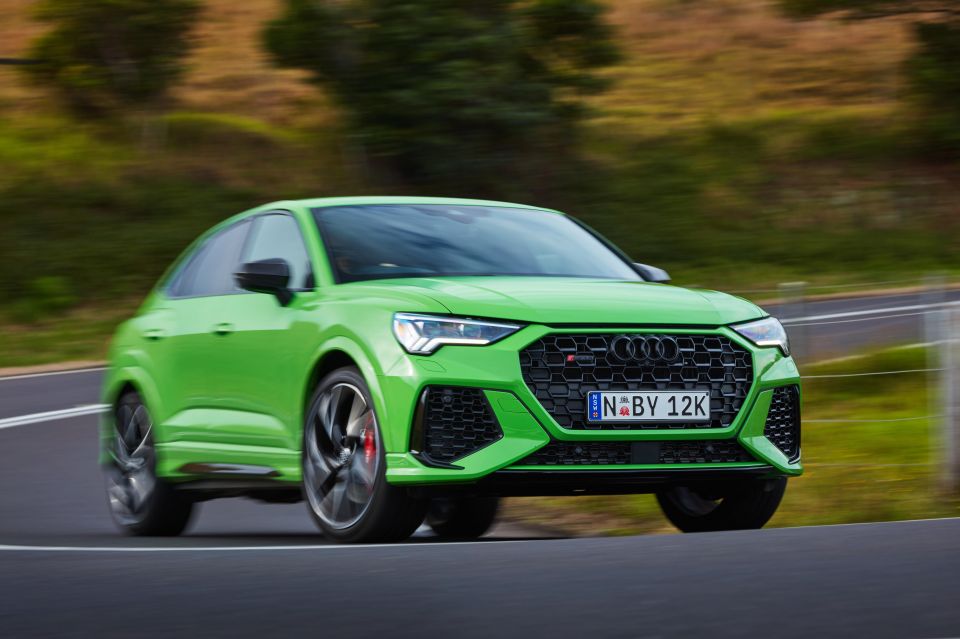
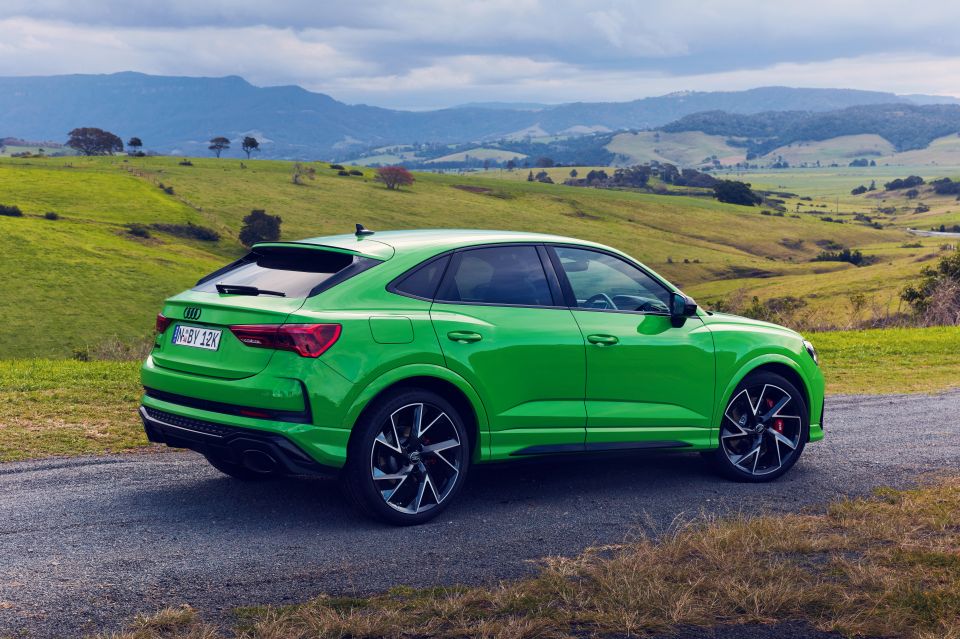

Senior Road Tester
New from
$89,900
excl. on-roads

Senior Road Tester
New from
$89,900
excl. on-roads


Senior Road Tester
New from
$89,900
excl. on-roads

Senior Road Tester
New from
$89,900
excl. on-roads
Quickly see how this car stacks up against its competition. Select any benchmark to see more details.
Where expert car reviews meet expert car buying – CarExpert gives you trusted advice, personalised service and real savings on your next new car.
It’s not just matching the latest and greatest RS6 monster wagon corner for corner. The all-new Audi RSQ3 and RSQ3 Sportback are damn near on its bumper in some of the most challenging twisties in regional New South Wales.
It’s nothing less than mind-blowing, and completely unexpected from what was previously a rather underwhelming model from the German brand made famous by its all-conquering ‘quattro’ rally cars of the ’80s.
Honestly, from where I’m sitting if Lamborghini were to make a compact SUV it would be the RSQ3 Sportback, which I’ve started calling the babyUrus with friends and family.

The first-generation Audi RSQ3 simply didn’t measure up with a poorly-proportioned profile. Frankly, it was too small to be a practical SUV, even in the compact class.
This second-generation model, though, is an entirely new piece of military-grade hardware from Audi Sport – and for the first time there’s a racier Sportback version along with the standard RSQ3.
Not that you’ll necessarily spot the difference between the two without someone in the know pointing to the slightly more aggressive rake in the roofline from the C-pillar back – otherwise the two are pretty much identical from the ground up.
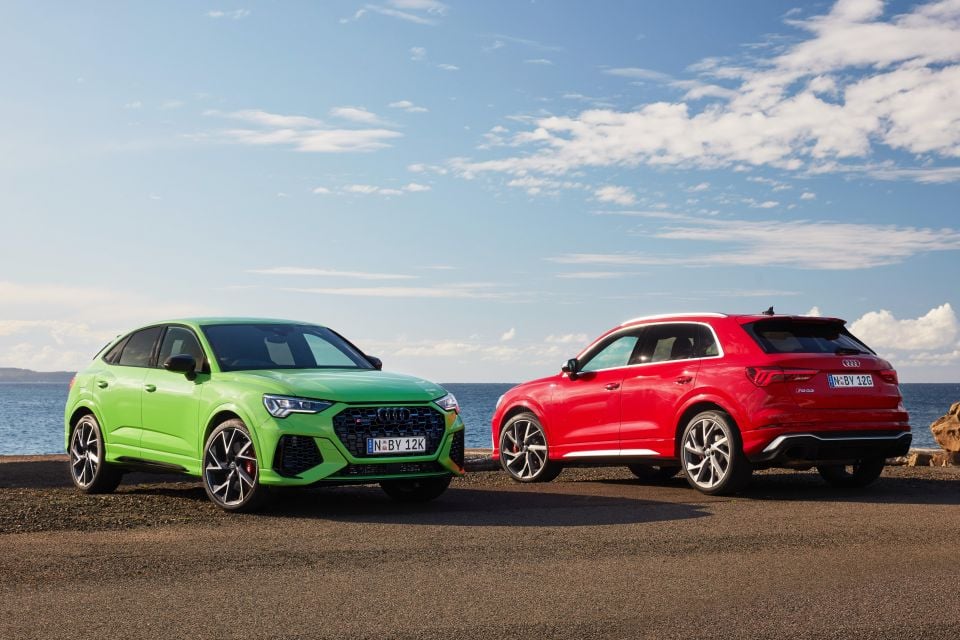
At least, that was my initial opinion. The more I saw both versions side-by-side, the more I shifted my bias toward the Sportback, impracticalities aside. Rear seat passengers taller than six foot will just have grin and bear it, I suppose.
Either way, the proportions are spot on this time around. From any angle the newest RSQ3 looks far more resolved, especially clothed in Audi’s vibrant new colours.
Kyalami Green and Turbo Blue just pop from the instant you lay eyes on them, but I’m partial to the Tango Red RSQ3 we also drove on the recent launch program.
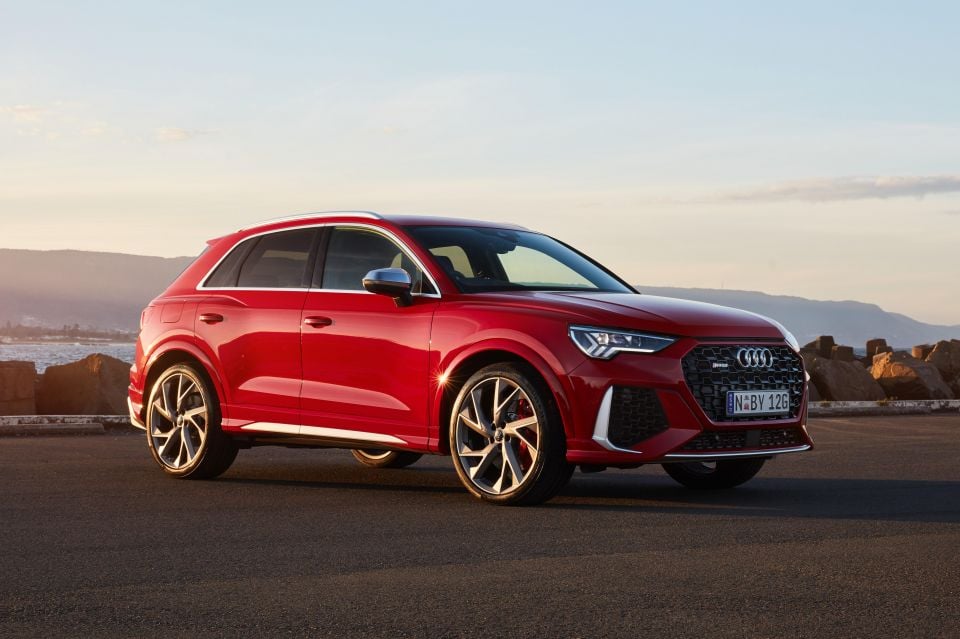
Whereas the previous Audi RS Q3 looked small, tall, and positively frumpy, this second-generation appears closer in size to the mid-sized Audi Q5 from the outside. It also its 10mm lower than the standard Q3 on the standard fit sports suspension.
At 4506mm long for the Sportback and just one millimetre more for the regular RSQ3, the new version is up to 860mm longer than its predecessor. The Q5 stretches 4663mm and is considerably heavier for it.
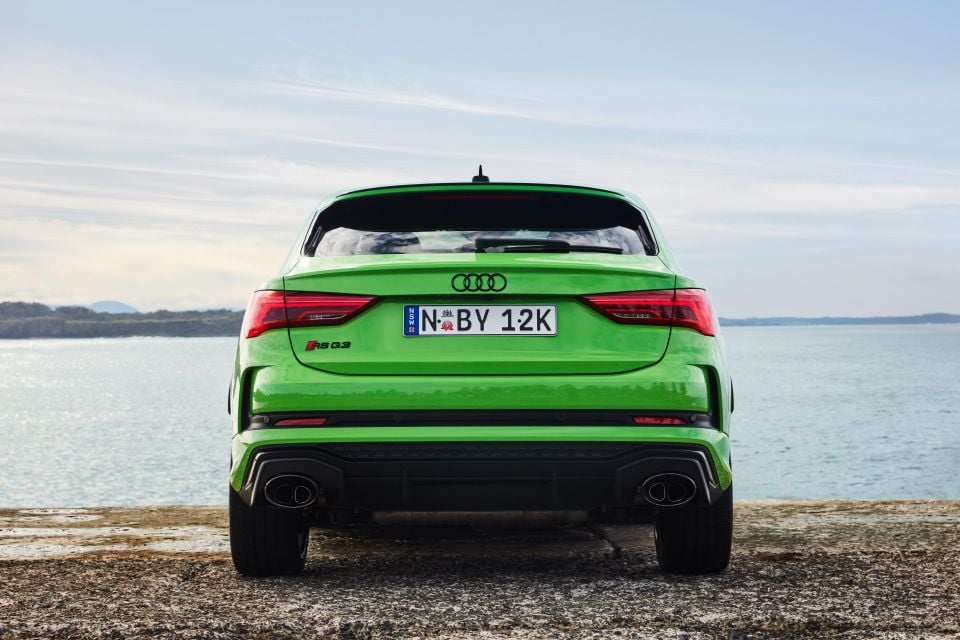
Audi Sport’s glorious five-cylinder turbocharged petrol engine sits under the bonnet of these two go-fast twins, only this time it has more grunt and seems to collaborate better with the transmission.
Forget about outputs for the moment, because the sound of this thing alone will be enough to convince cashed-up enthusiasts to sign on the dotted line whether they need one or not. The higher the revs, the better it gets.
As you work the quick-shifting seven-speed dual-clutch gearbox up and down the ratios there are few (if any) better sounding SUVs.
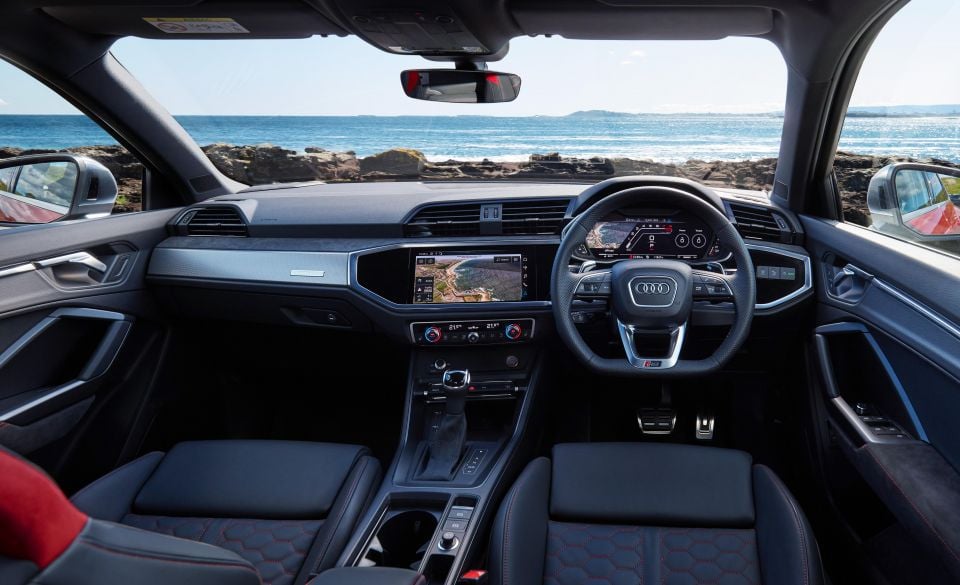
Alas, I’m going to be scolded by the editor (Consider this a stern talking to – Ed.) for getting ahead of myself here, so more from behind the wheel later in the piece – which can’t come soon enough.
The standard Audi RSQ3 is priced from $89,900 before on-road costs, while the Sportback attracts a $3000 premium with its $92,900 price tag before on-road costs.
Price-wise, it’s a big step from the top-spec Audi Q3 Sportback 40 TFSI quattro S line priced from $61,900 before on-roads, but it’s hardly a fair comparison given the performance gains, not to mention the lavish cockpit and level of equipment in the RSQ3.
Honestly, competitors in this space are few and far between, because they’re either smaller like the soon-to-be-replaced Mercedes-Benz GLA45 AMG ($92,100) or larger, like the Mercedes-Benz GLC43 AMG ($112,500) and BMW X3 M40i ($109,900).
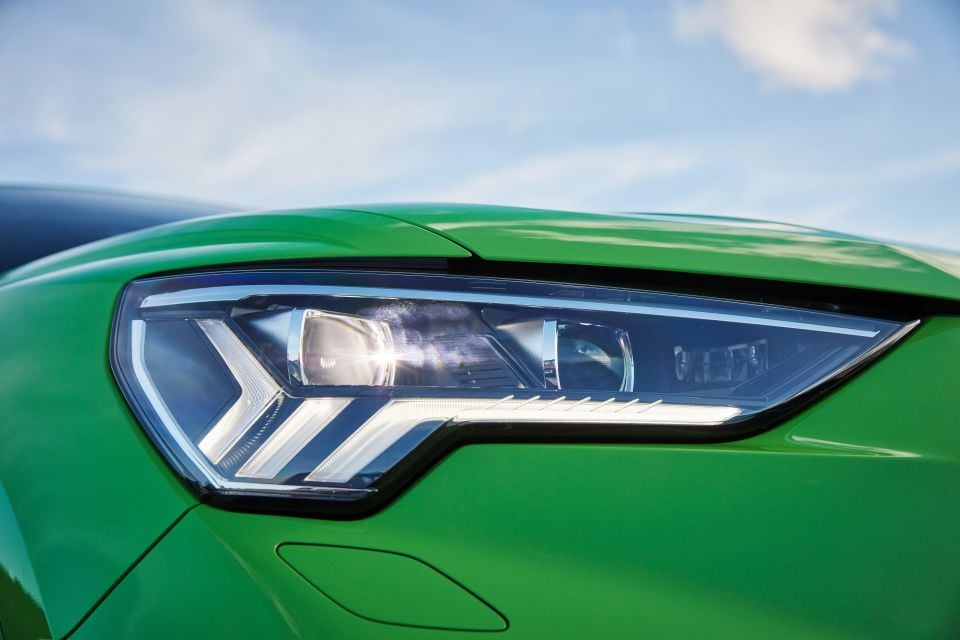
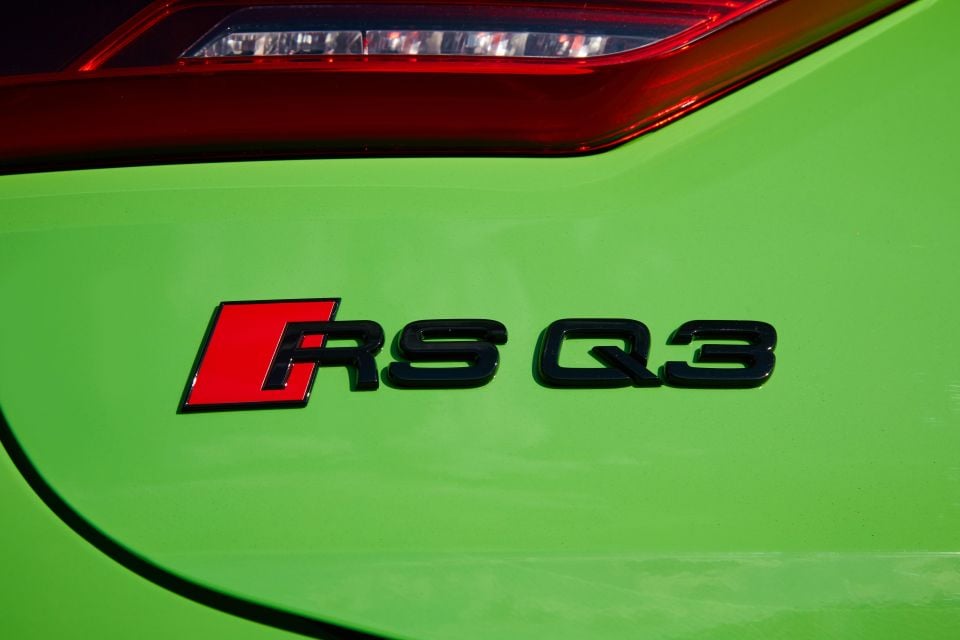
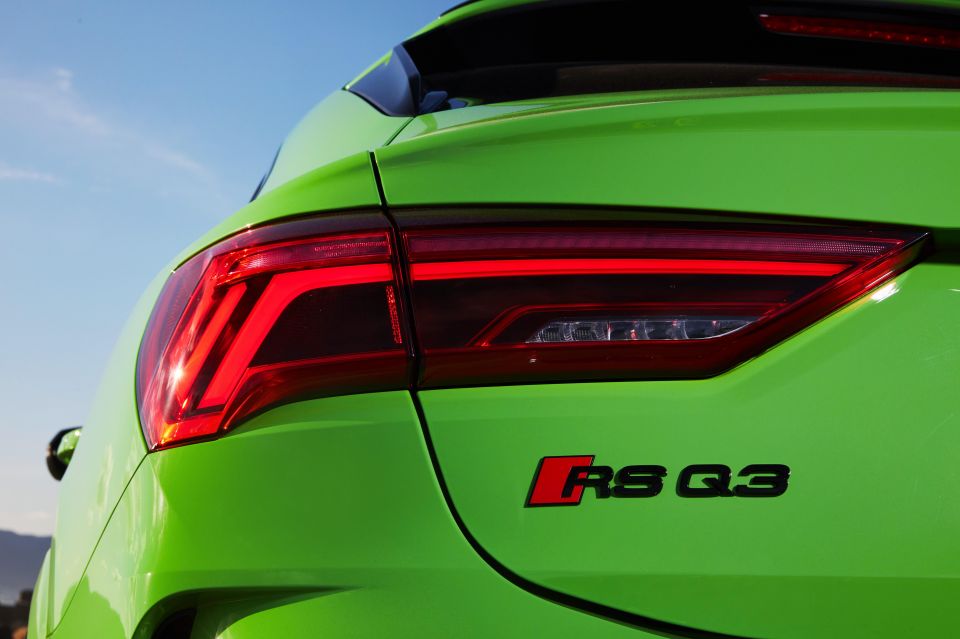

Buy your new car without the stress. It's fast, simple and completely free.

Great service from Travis and team, second time I have used this business would not hesitate to recommend them to anyone
Craig C.
Purchased a Ford Ranger in Sunshine Coast, QLD
CarExpert helped Craig save thousands on his Ford Ranger, now let us save you on your next new car.
Find a dealThankfully, those extroverted paint finishes are a no-cost option on the RSQ3, as is the aluminium exterior styling package that adds brushed alloy side mirror caps and roof rails should you prefer them over the standard-fit black pack.
It’s refreshing to look through equipment specs in the premium segment to see the vast majority of kit on board is standard across both variants. Don’t even bother looking at the options because you won’t miss them, unless of course you intend to frequently track the car.
If that’s the case, be prepared to stump up a cool $10,600 for RS carbon ceramic brakes with red, grey or blue calipers. Trust me when I tell you won’t need them, such is the bulletproof stopping power of the standard steel stoppers (tried and tested).
Standard is the superb RS sports exhaust system, a dual tailpipe setup with inbuilt flaps and gloss black oval tips the size of drainpipes.
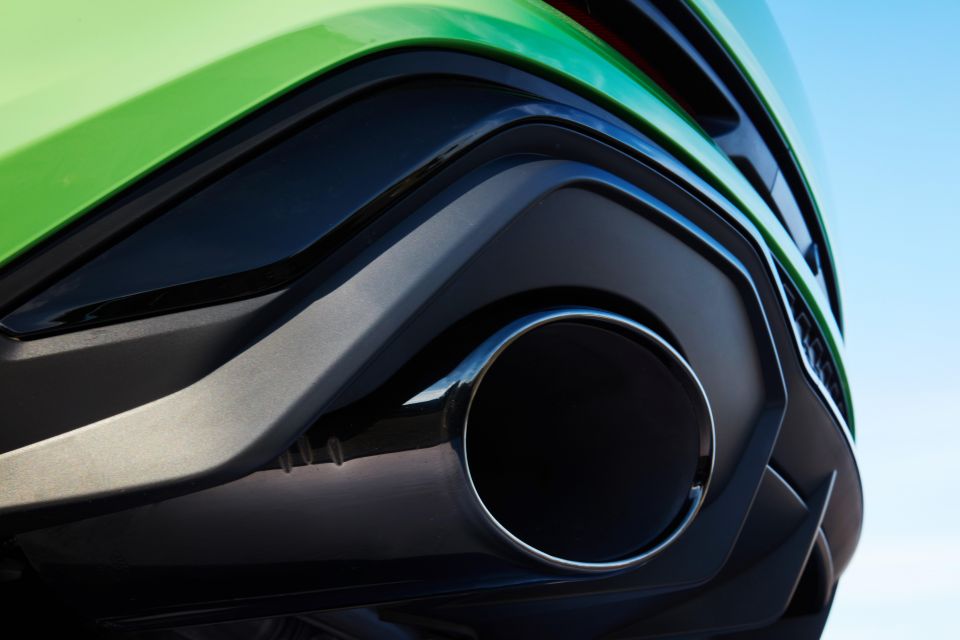
There’s also keyless entry and start, an electrically-operated tailgate with gesture control, privacy glass, and RS sport seats upholstered in soft Nappa leather which not only look the part, but offer an excellent balance between body-hugging bolster and long-haul comfort.
Audi’s trick Matrix LED headlights with darkened trim also feature as standard equipment, along with dynamic indictors and automatic headlight range control. There’s also three-zone climate control
Additionally, there’s aluminium inlays, the LED ambient lighting package, and a superb three-spoke, flat-bottomed RS steering wheel that’s brilliantly tactile and fully functional with Audi’s scroll buttons. You’ll also notice a new RS button that drivers can use after pre-loading their favoured configurations for engine, gearbox and suspension settings.


The centrepiece in the Audi RSQ3 cabin is the super-size, high-definition digital instrument cluster dubbed Virtual Cockpit Plus which is fully configurable to whatever size navigation or performance data you require in your field of vision.
That RS-specific menu includes a power/torque display, G meter and lap timer. There’s also wireless Apple CarPlay, Android Auto, and wireless phone charging, although there are USB-A and USB-C ports up front, as well as two USB-C ports for rear-seat passengers who prefer to stay wired.
For those audiophiles out there, the standard audio is a brilliant Bang & Olufsen 3D surround sound system using 15 speakers with a 16-channel amplifier for a total of 680 watts.
A 10.1-inch infotainment touchscreen rounds out the technology.
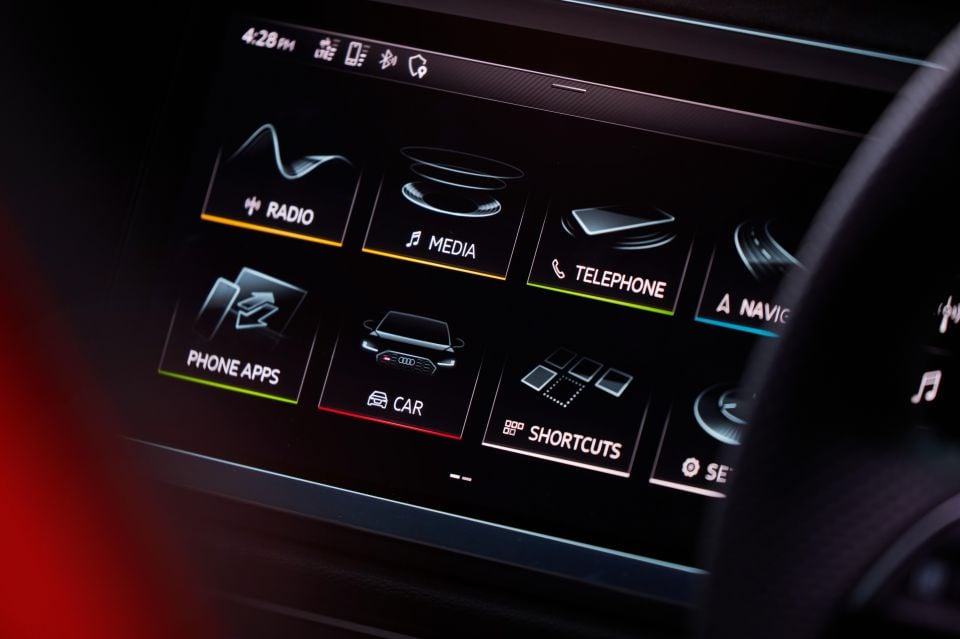

Both the RSQ3 Sportback and wagon were fitted with a few well-chosen extras you might wish to consider. The Kyalami Green had Audi rings and badges in black – a must for this colour ($700), inlays in carbon twill (these look good too at $850), and exterior mirror caps in carbon (get those for $1300).
The Turbo Blue car was equipped with one of two RS extended design packages ($2500) that enhances the cabin with various Alcantara trim bits to match the exterior colour.
Those trim bits are extensive, and include door armrests in both seat rows, parts of the dashboard, upper sections of the front seat bolsters, seat belt edges and steering wheel trim in black Alcantara with blue stitching that extends to the shifter gaiter and floor mats.
Based on crash tests from 2018, the latest-generation Audi Q3 has been awarded a five-star ANCAP safety rating which applies to all Q3 variants.
It scored 95 per cent for adult occupant protection, 88 per cent for child occupant protection, 76 per cent for vulnerable road user protection and 85 per cent for safety assist.
The RSQ3 is equipped with a host of active safety systems including low- and high-speed autonomous emergency braking with pedestrian detection, as well as lane-keeping assist, and lane departure warning across the range.
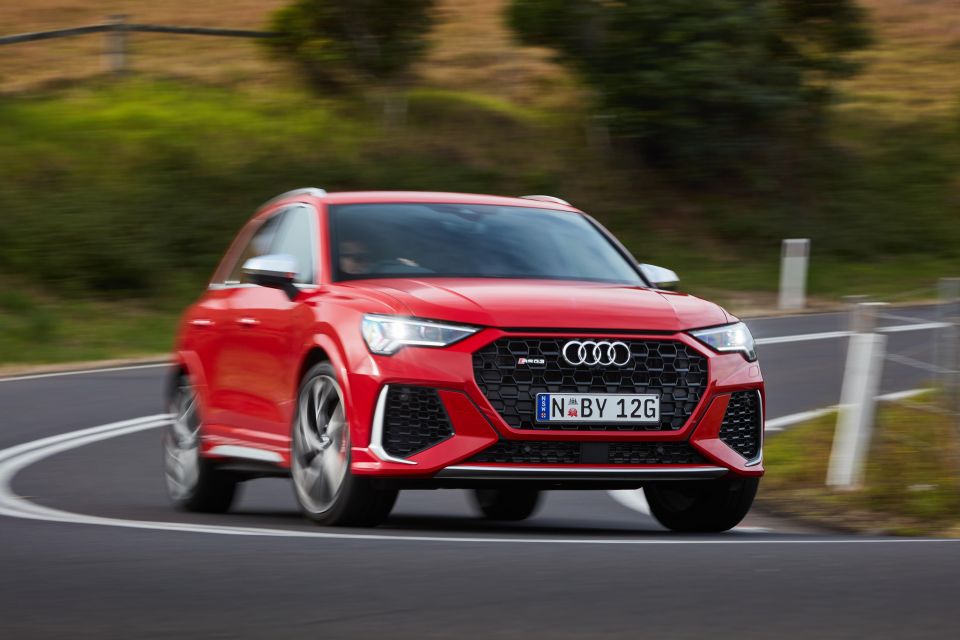
Just to be clear, the AEB system on the Audi RSQ3 provides collision mitigation between 5km/h and 85km/h for pedestrians and cyclists, and up to 250km/h for vehicles. There aren’t many pedestrians on the autobahn, after all.
It also gets adaptive cruise with stop/go and emergency assist that uses both audible and haptic warnings, and a 360-degree camera using four wide angle cameras for top view, panoramic view for front and rear and kerb-side view.
The clarity is most impressive. There’s also rear cross-traffic alert for when you’re reversing out of a perpendicular parking spot.
For so long Audi has been the benchmark for cockpits and, while most of its German counterparts have raised the bar to similar standards, the RS models take it to another level by combining tasteful luxury with cutting-edge technology that’s mostly intuitive.
It’s very much a driver-centric cabin using the kind of high-end materials and tech you might find in the Eccleston Square Pimlico hotel in London, which embeds screens everywhere throughout the room while maintaining a luxury feel.
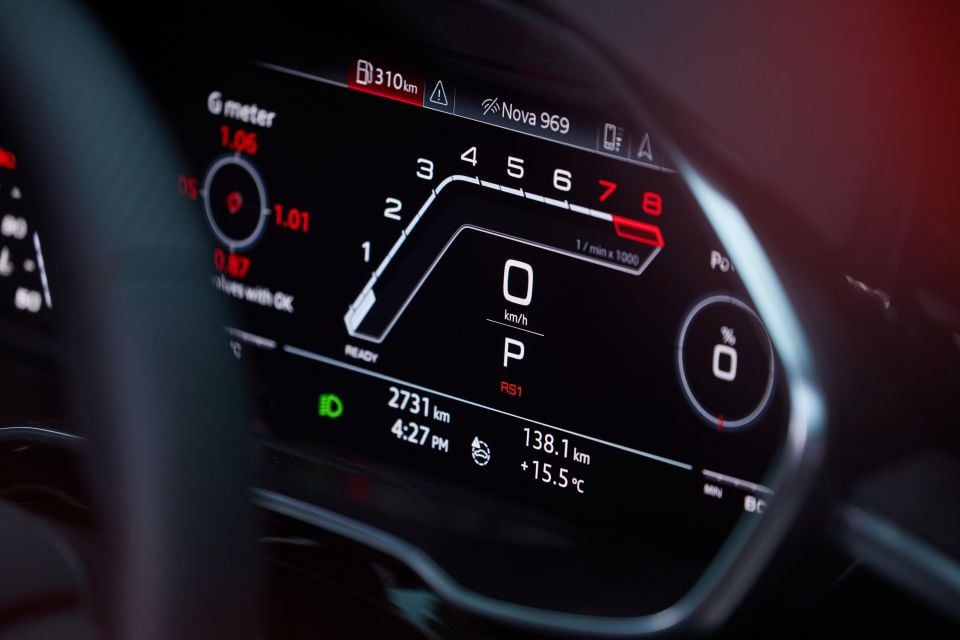
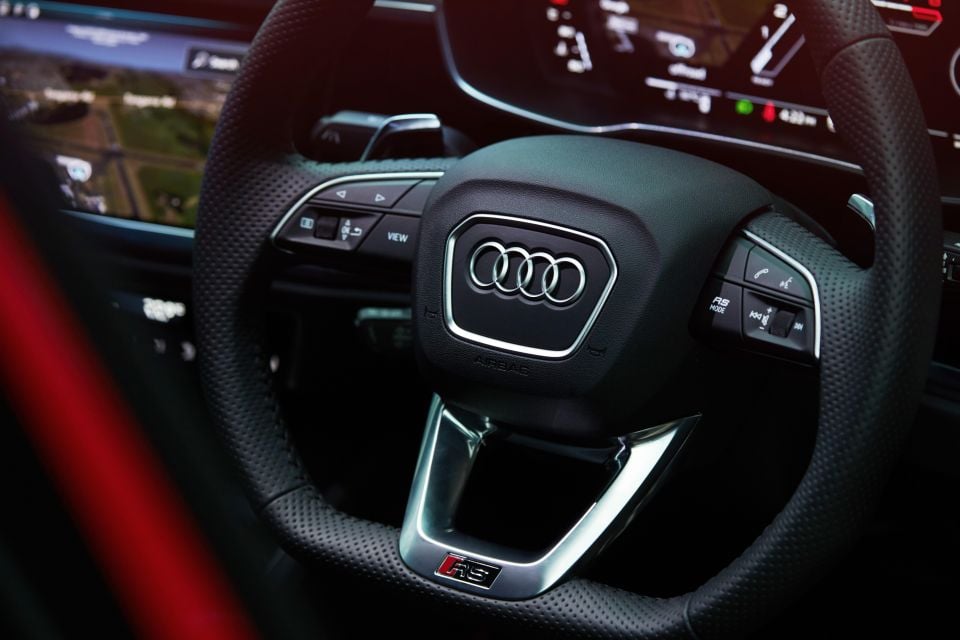
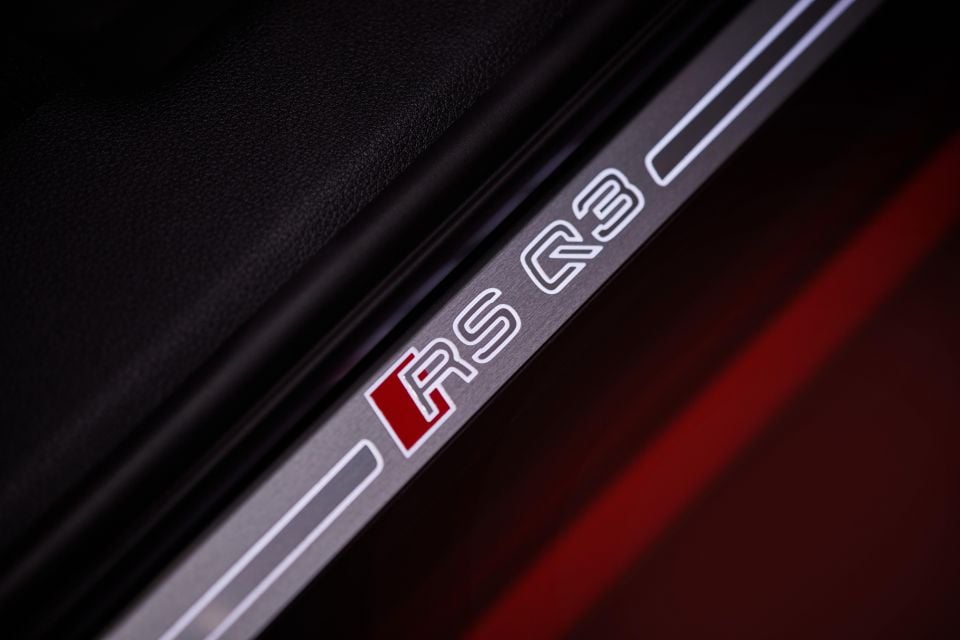
The colour-matched Alcantara inserts add warmth and a look and feel that I find enormously appealing, as did every other journalist on the launch event.
They might be tagged RS Sport seats, but these are comfortable pews that balance between support, comfort and aesthetics. We clocked up several hundred kilometres in these chairs, many of those while pushing hard through an endless succession of corners. No complaints.
Second-row legroom is now satisfactory, though headroom back there in the Sportback is clearly compromised for taller frames. If that’s the case, the RSQ3 is a more comfortable place to be. Passengers back there can also select the temperature, but not individually.
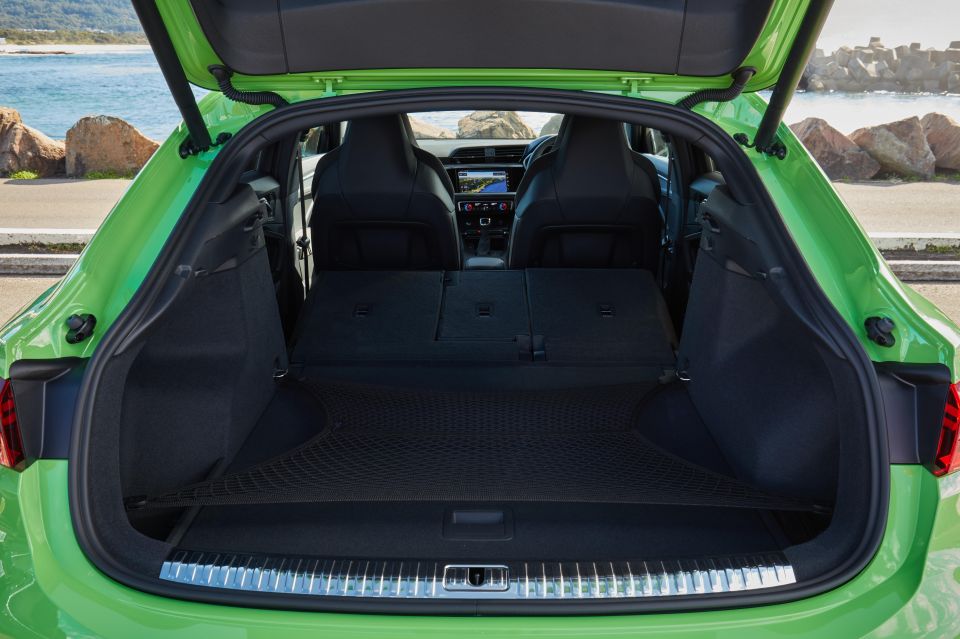

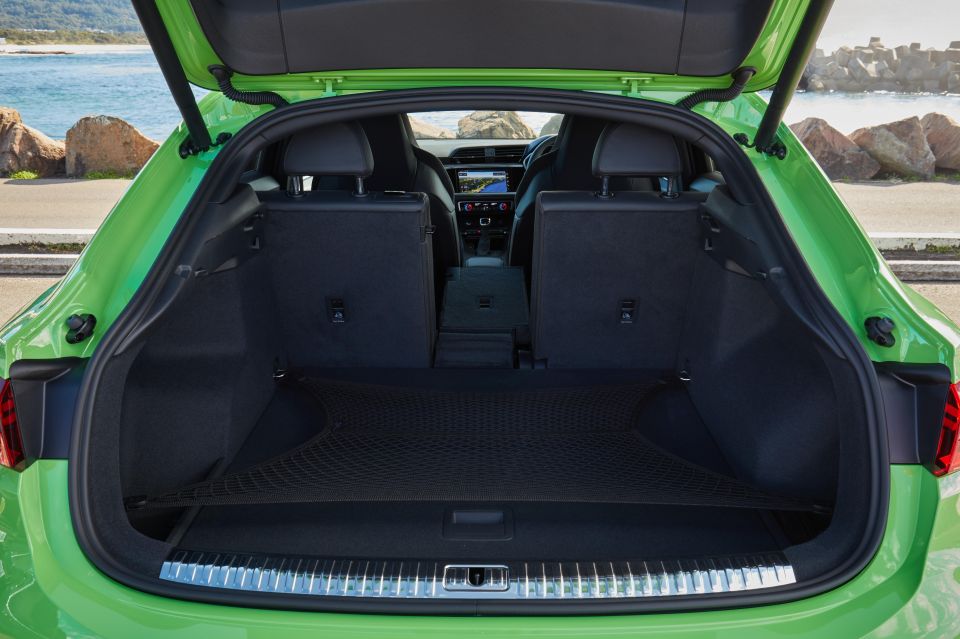
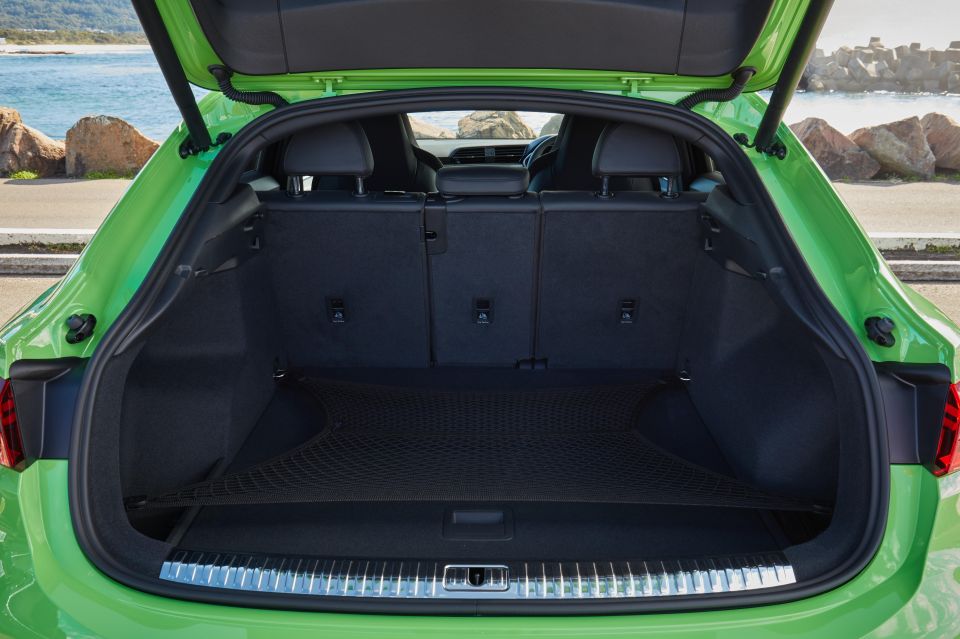
Boot space for both the regular Audi RS Q3 and Sportback is the same 530 litres which is a smart design move for those favouring the latter.
It’s only when you fold the rear seats does the more upright RSQ3 gain 125 litres over its sportier sibling. That said, both versions get a sliding rear bench and 40/20/40 split meaning you can vary cargo space over rear legroom or visa versa.
Both Audi RSQ3 bodies get the same 2.5-litre inline turbocharged five-cylinder petrol engine making an entirely robust 294kW of power between 5850 and 7000rpm and 480Nm of torque between 1950 and 5850rpm.
It’s good enough to propel the RSQ3 from standstill to 100km/h in 4.5 seconds, and onto a governed top speed of 250km/h.
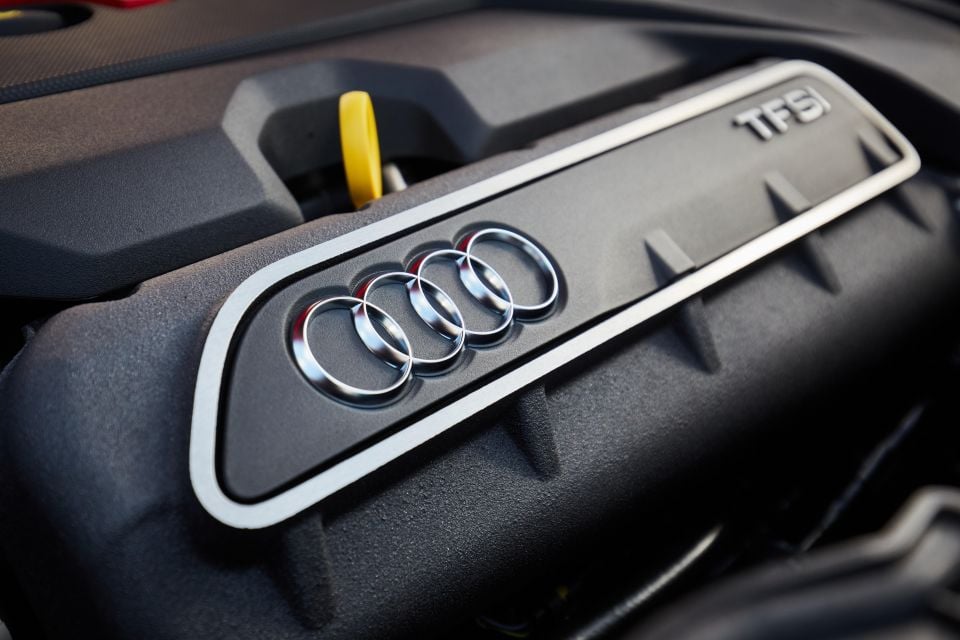
Where expert car reviews meet expert car buying – CarExpert gives you trusted advice, personalised service and real savings on your next new car.
While that’s several tenths quicker the 2016 RSQ3, it’s still a tenth slower than the final version, the RS Q3 Performance which claimed 4.4 seconds. You can bet a faster version will follow suit.
It’s worth noting the RS3 hatch and sedan versions share the same powertrain making identical outputs, but with a weight-saving advantage of up to 215kg. They claim a blistering 4.1 second run.
On the other hand, the Mercedes-Benz GLA45 AMG tips the scales at 1585kg (to the RSQ3’s 1790kg) and needs 4.8 seconds.
With the RSQ3 it’s mostly about the drivetrain. Jeez, does it hammer along.
Eighty per cent or more of my several hundred kms behind the wheel of both versions were in the full-fat Dynamic mode with all the major controls wound up to the max, and it’s been a while since I’ve had so much fun in a compact SUV – even though it’s not that compact any more.
This is one of the world’s most inspiring engines both for its ability to deliver big-hitting grunt from very low in the rev range and the five-pot growl that means you won’t ever need to experience the Bang & Olufsen sound system.
And the harder you punt it, the better it sounds. Forget about twin-turbo sixes unless they’re in a 911, not many engines can match the five-pot Audi engine for aural delight.
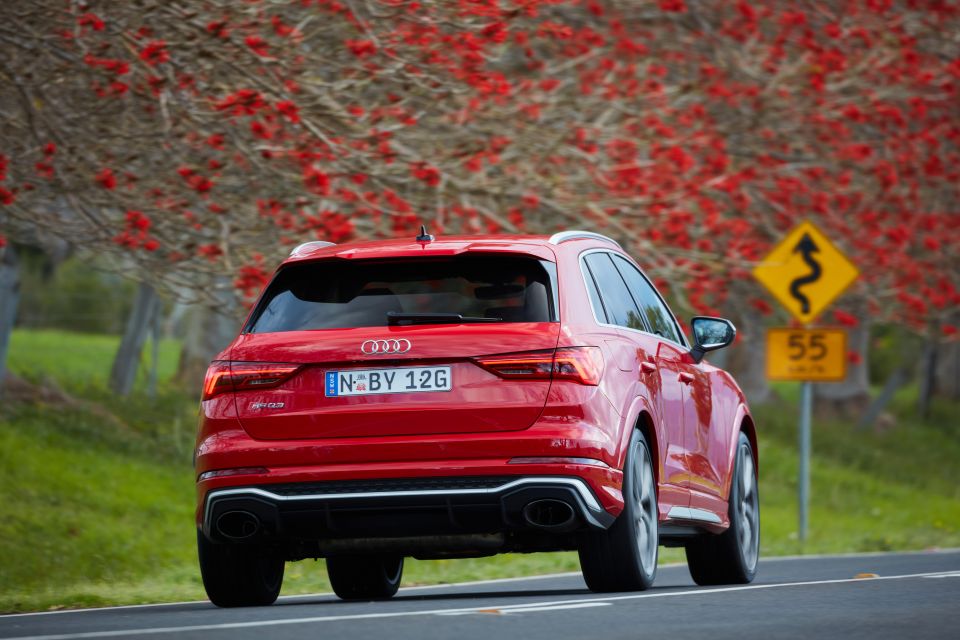
It punches hard from any speed, but get on the power early on exit for maximum exhilaration. There’s more urgency with the throttle and dual-clutch transmission if you stick with paddle-shifting in manual mode. At least, that’s the go in back-to-back bends on country roads.
It won’t always give you the gear you want on the downshift – frustrating as that might be – meaning you’ll need to wipe off more speed, but once you work it out (and the computers work your driving style out) it’s a total blast. Conversely, pulling the right-hand paddle at full tilt is much more satisfying and very rapid.
It’s uncanny how much speed the RSQ3 can carry through corners. Put that down to the quattro system and the sheer level of grip available – seemingly on any road surface and in any conditions.
Reining in that speed is trouble free with surefooted brakes that measure 375mm up front and 310mm down back. There’s absolutely no reason to entertain carbon ceramics for this vehicle given how it stood up to hours of heavy-duty punishment.

Perhaps the most interesting thing to come out of the hard-charging drive program was the fact there was very little (if any) dynamic difference between the regular RSQ3 and the Sportback.
Audi has forever been the target of criticism for its inert steering communication back to the driver. While it’s still a tad remote, the RSQ3 represents a significant improvement in steering feel and response over the previous model thanks to its progressive electromechanical steering with speed-dependant assistance.
Forget about body roll, because there’s little if any (in Dynamic mode) when you’re hustling along. In fact, even in Comfort, this thing is very composed.
The RSQ3 gets standard sports suspension with adaptive dampers and while there’s noticeably more compliance in Comfort, especially over broken road, never could you call the ride too harsh.
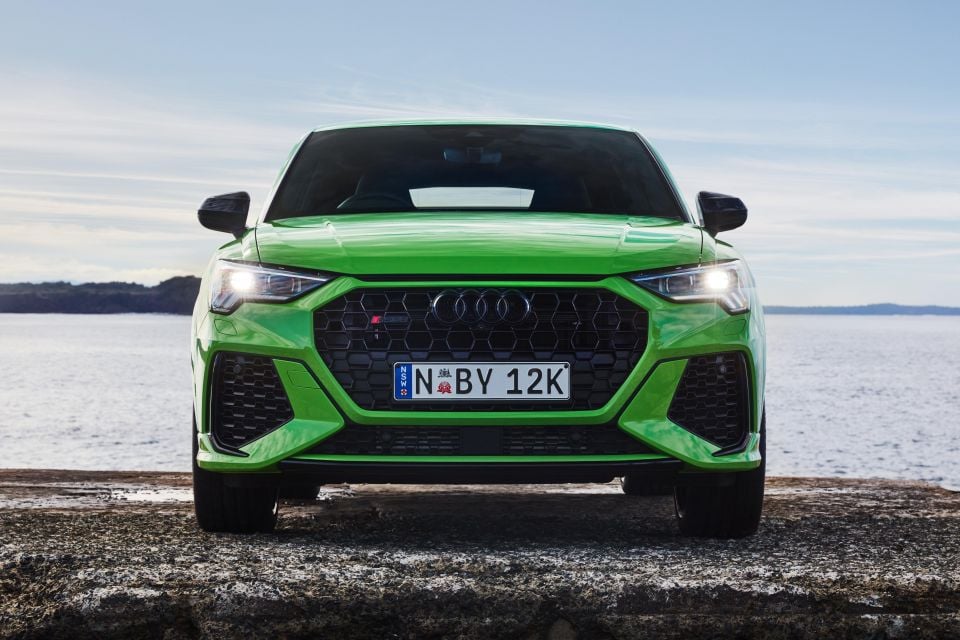
Even in the most aggressive mode bumps and cracked edges were largely absorbed by the dampers. It’s another big surprise that Audi has clearly engineered more daily usability into RS suspension systems.
Clearly, we’ll be more educated in this regard when we get the RSQ3 on suburban roads in our capital cities for a more rounded appraisal but I’m well and truly satisfied for now.
It’s got a 63-litre fuel tank and you’ll need to fill it with premium 98 RON fuel as recommended by Audi.
It claims a combined fuel consumption of 8.9L/100km but we got closer to 20L/100km given the performance nature of our drive program. Again, we’ll test fuel consumption more evenly when we get the car through a local test cycle.
Audi offers a three-year, unlimited-kilometre factory warranty for all its vehicles, including RS models. It does offer buyers the option to extend that warranty to five years from new.
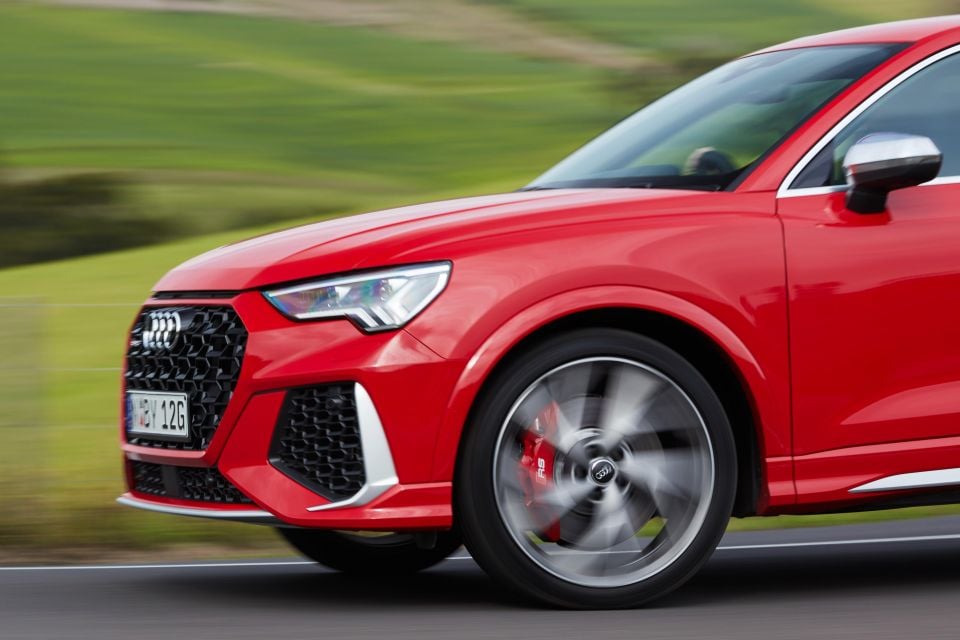
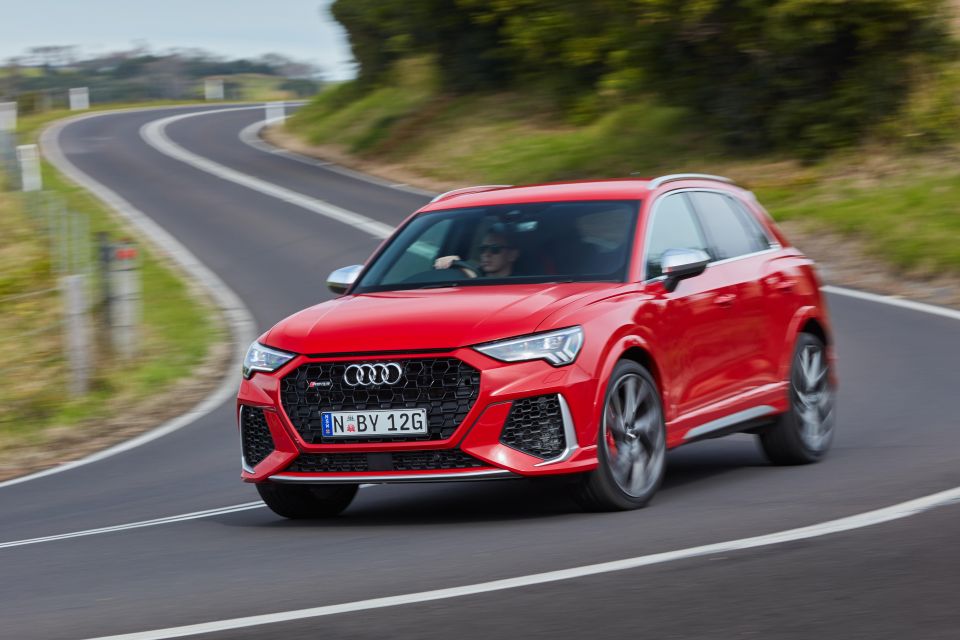


Both the RSQ3 and RSQ3 Sportback are offered with a choice of two comprehensive service plan packages: three years priced at $2320, or a five-year service plan for $3420.
Audi Sport has upped the ante big time with the new Audi RSQ3 model. It’s a far more resolved vehicle than its predecessor in every way.
It’s stupendously satisfying when driven hard yet more practical than ever before, and the cockpit is laden with features and cutting-edge tech to boot.
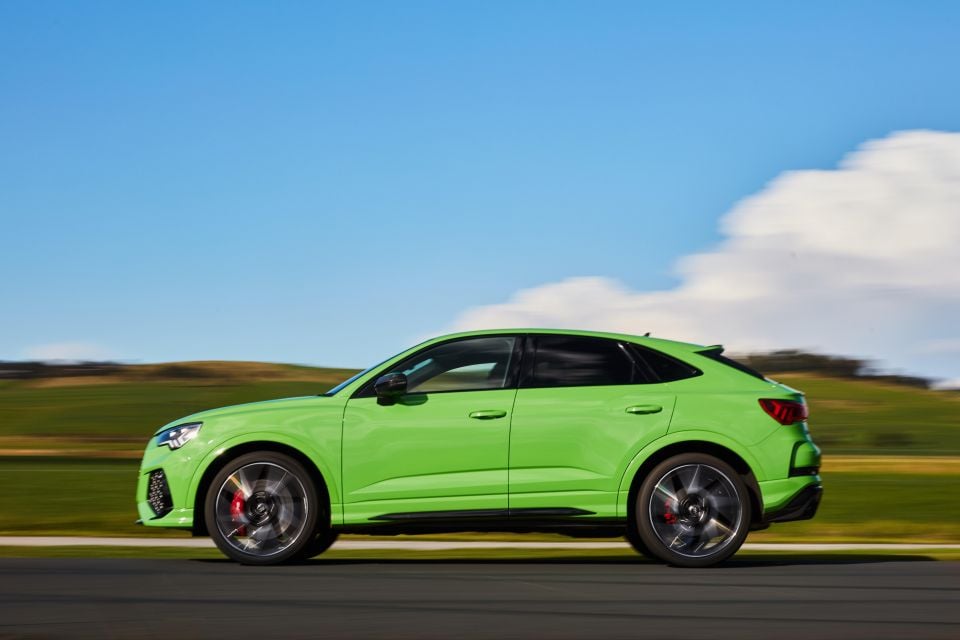
It’s hard to think of a better, more appealing performance SUV that delivers on so many fronts at this price point. I can’t wait to get back in it.
I’ll take the Sportback in Kyalami Green.
Where expert car reviews meet expert car buying – CarExpert gives you trusted advice, personalised service and real savings on your next new car.
Anthony Crawford is a CarExpert co-founder and senior presenter with 20+years in automotive journalism and content creation.


Damion Smy
8 Hours Ago


Damion Smy
9 Hours Ago


Damion Smy
11 Hours Ago


Damion Smy
12 Hours Ago


Damion Smy
14 Hours Ago


Damion Smy
15 Hours Ago